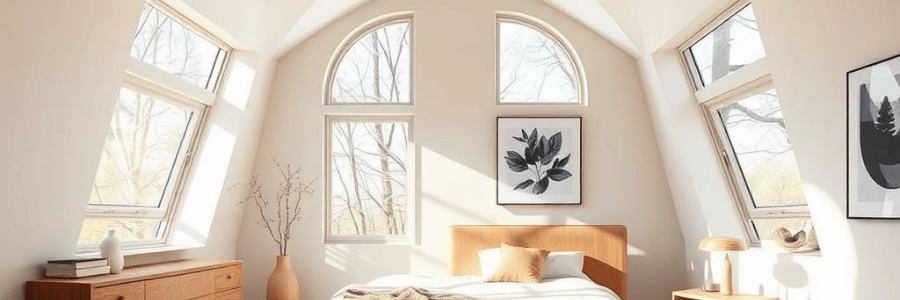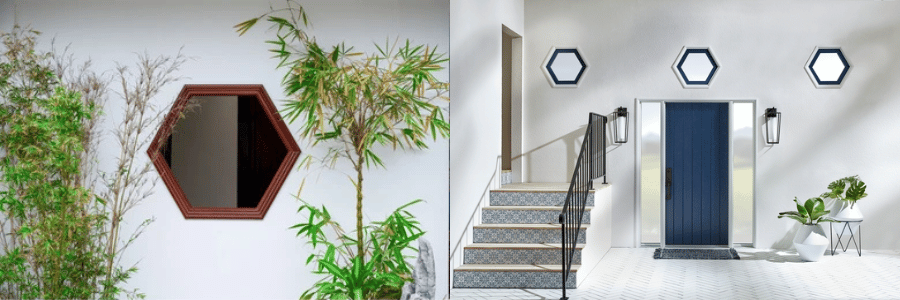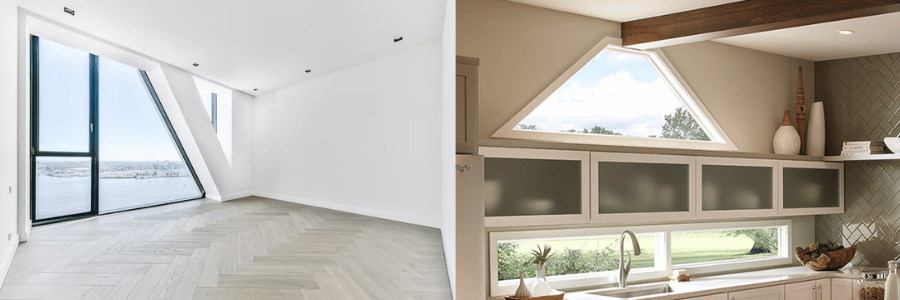Windows are more than just functional elements of a home—they are an essential part of the overall architectural design. Traditionally, windows have followed conventional shapes like squares and rectangles, offering symmetry and uniformity. But as architectural styles evolve, so do the possibilities for window design. If you’re looking to add a unique flair to your home, why not break away from the standard? Geometric and asymmetrical window designs are an exciting and innovative way to bring character, creativity, and a touch of modernity to your living space.
In this post, we’ll explore the world of geometric and asymmetrical windows, highlighting their benefits, popular shapes, and how you can incorporate them into your home design to create a bold and striking look.
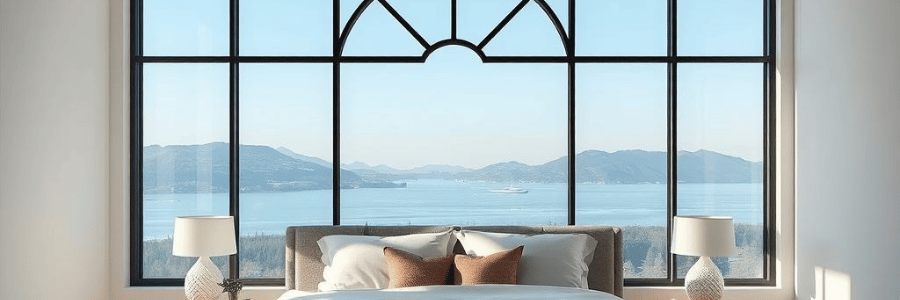
What Are Geometric and Asymmetrical Window Designs?
Geometric window designs go beyond the traditional square or rectangular frames. They embrace unconventional shapes and forms, drawing inspiration from geometry, nature, and modern art. Asymmetrical windows, on the other hand, break from the idea of balanced or evenly spaced elements, focusing instead on creating visual interest through irregularity, contrast, and unexpected proportions.
While both styles offer unique aesthetics, they also bring a sense of dynamism to your space, whether you’re looking for a minimalistic, contemporary vibe or a more whimsical, avant-garde design.
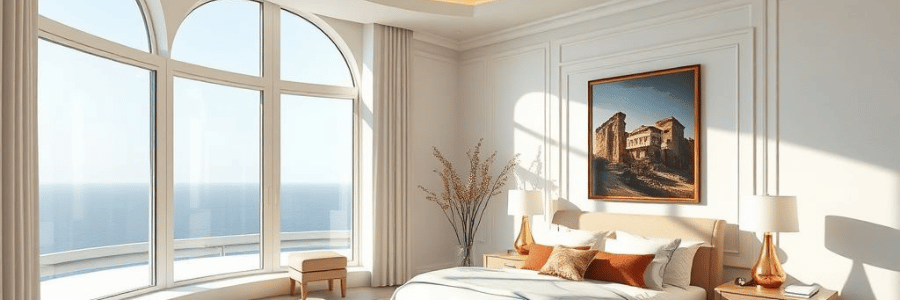
Why Choose Geometric and Asymmetrical Windows?
Geometric and asymmetrical windows can transform a home by adding personality and style. Here are some reasons to consider these unique designs for your space:
1. Architectural Statement
Geometric and asymmetrical windows are bold, visually striking, and instantly eye-catching. If you’re designing a modern, contemporary, or even eclectic home, these windows can become an architectural focal point that elevates the entire structure. They allow you to move beyond traditional norms and experiment with unique shapes and patterns that reflect your individual taste.
2. Maximized Natural Light
Many geometric windows are strategically designed to allow more natural light into a space. For example, large circular or triangular windows can capture light from multiple angles, flooding a room with sunlight and brightening up dark corners. The angles and placement of asymmetrical windows can create dynamic light patterns within the home, changing throughout the day as the sun moves.
3. Connection with the Outdoors
Geometric windows are often designed to frame views in creative ways. For instance, a hexagonal window might capture a specific view of a garden or a sweeping landscape, while a circular window can focus on the beauty of the sky. These window shapes can create an organic connection with the surrounding environment, offering a unique perspective from within the home.
4. Customization and Personalization
Geometric and asymmetrical windows are highly customizable, which means you can design windows that complement the specific aesthetic and functional needs of your home. Whether you’re working with a minimalist style, a nature-inspired theme, or an industrial look, these windows can be tailored to enhance the space in a way that traditional window shapes simply can’t.
5. Boosting Curb Appeal
Distinctive windows can significantly improve the curb appeal of your home. Whether you’re renovating your home or designing a new build, adding an unexpected window shape or configuration can make your property stand out in the neighborhood. Geometric windows bring a sense of originality and artistry, making your home memorable and attractive to visitors.
Popular Geometric and Asymmetrical Window Shapes
Geometric and asymmetrical windows come in a variety of shapes, each bringing its own distinct character. Here are some of the most popular options to consider when incorporating geometric or asymmetrical windows into your design:
1. Circular (Round) Windows
Circular windows are a classic example of geometric design, often used to add a touch of elegance and uniqueness to a space. They are commonly used in traditional and contemporary homes to break up the rigidity of square or rectangular windows. These windows are particularly effective for framing specific outdoor views, such as the sky, garden, or architectural details.
Best for: Coastal homes, modern architecture, or artistic interiors.
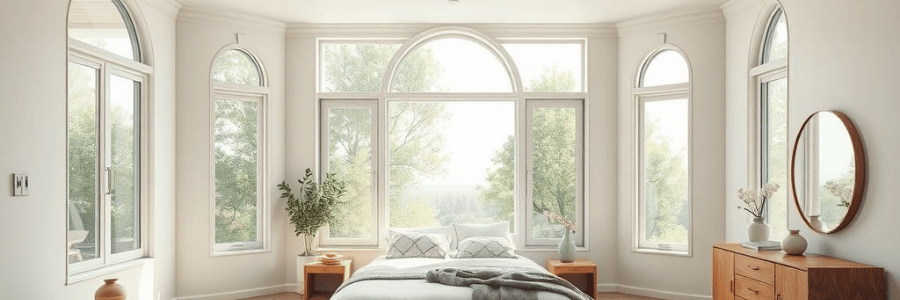
2. Triangular Windows
Triangular windows are bold and angular, making a statement in both contemporary and industrial designs. They can be used in a variety of configurations, from small accent windows to large, dramatic features. Triangular windows are great for corners, adding a sense of sharpness and geometry to a room or façade.
Best for: Modern homes, angular rooflines, or as a feature in lofts or industrial spaces.
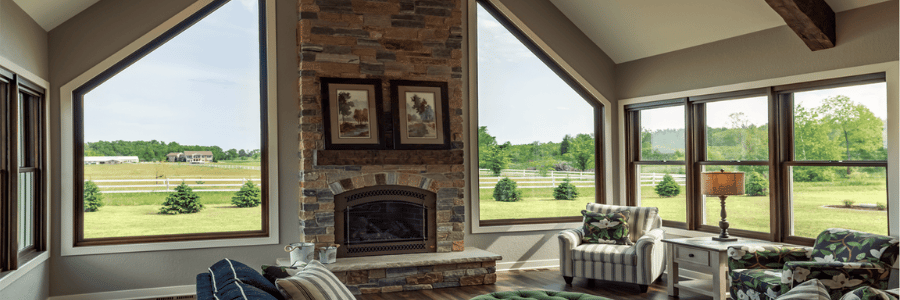
3. Hexagonal Windows
Hexagonal windows are a striking design choice that can bring both symmetry and asymmetry to a room. They evoke a sense of modernism and nature (as the hexagon is often found in nature, like honeycombs). These windows can work well in kitchens, bathrooms, or accent spaces where you want to create a focal point or interesting visual contrast.
Best for: Eclectic interiors, nature-inspired themes, or to complement geometric and minimalist designs.
4. Arched or Semi-Circular Windows
Arched windows, though somewhat traditional, have a timeless elegance that works well with both classical and modern homes. The smooth, curved lines of these windows soften a space and provide a sense of grandeur. They are often used to highlight entryways, grand living rooms, or above doors for a touch of architectural refinement.
Best for: Classic, Mediterranean, or Gothic-inspired homes.
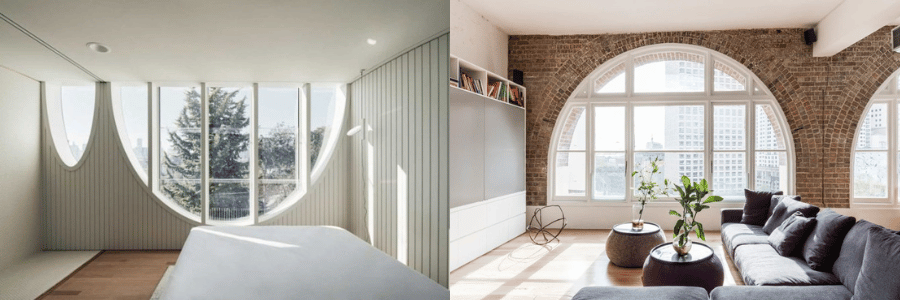
5. Octagonal Windows
Octagonal windows are less common but offer a unique shape that can give your home an intriguing look. They can be used as accent windows or placed strategically to frame specific views. The eight sides of an octagonal window create a sense of movement and complexity, making them ideal for contemporary and avant-garde designs.
Best for: Modern architecture, minimalist homes, or as an accent piece in any room.
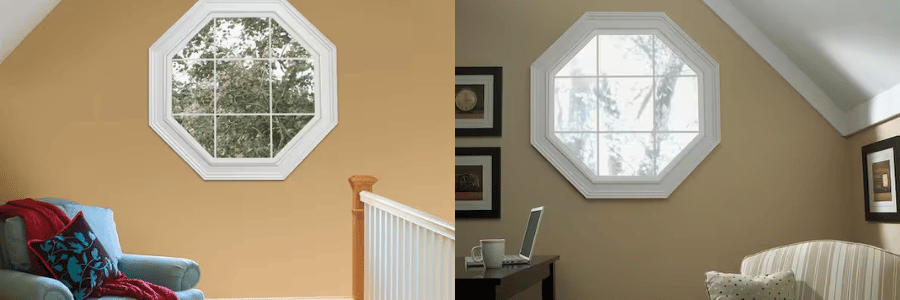
6. Asymmetrical (Irregular) Shaped Windows
Asymmetrical windows can take almost any form—be it an off-center rectangle, a misaligned set of squares, or even a seemingly random arrangement of irregularly shaped glass panes. These windows are often part of experimental or avant-garde designs, making them ideal for architects and homeowners who embrace bold, cutting-edge styles.
Best for: Modern, avant-garde, and creative spaces, or when you want to create visual tension and excitement.
7. Split or Multi-Pane Geometric Windows
Some geometric window designs incorporate multiple shapes within a single frame. For example, a multi-pane window could combine a circular window with rectangular sections, or create a mosaic of smaller triangular panes. These can be placed in creative configurations to add both functionality and artistry to your home’s design.
Best for: Unique, modern homes, or for creating windows that complement a specific view or interior layout.
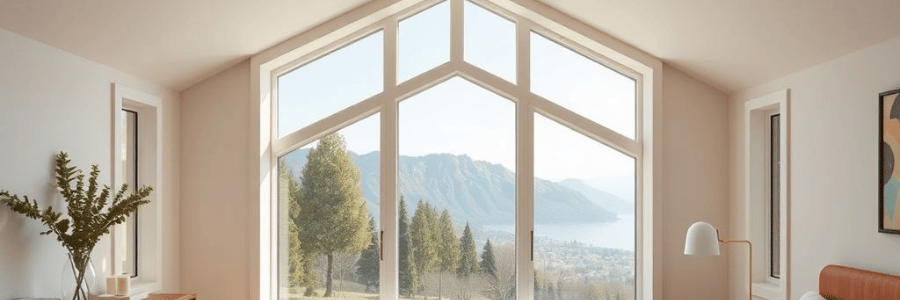
Tips for Incorporating Geometric and Asymmetrical Windows into Your Home
While geometric and asymmetrical windows are undoubtedly eye-catching, it’s essential to incorporate them thoughtfully into your design. Here are some practical tips for making these unique windows work in your home:
1. Consider the Flow of Natural Light
Before choosing the shape and placement of your windows, consider how the design will affect the natural light in the space. For example, large circular or triangular windows can allow light to pour into a room from unusual angles, creating dynamic patterns throughout the day.
2. Balance with the Rest of the Design
Geometric windows are bold and often serve as the focal point of a room. To keep the space harmonious, balance the boldness of these windows with more neutral, complementary design elements. This could include minimalist furniture, subdued color palettes, and clean lines in other architectural features.
3. Match Window Shapes with the Architecture
The shape and style of your windows should complement the overall architecture of your home. For example, a modern, angular home might be a perfect match for triangular or hexagonal windows, while a more classical design could work well with arched or round windows. Ensure that your choice of window shapes enhances the overall aesthetic of your home.
4. Use Geometric Windows to Frame Views
One of the key benefits of geometric windows is their ability to frame unique views. Position these windows strategically to capture the best views of your outdoor environment—whether it’s the skyline, your garden, or a nearby body of water.
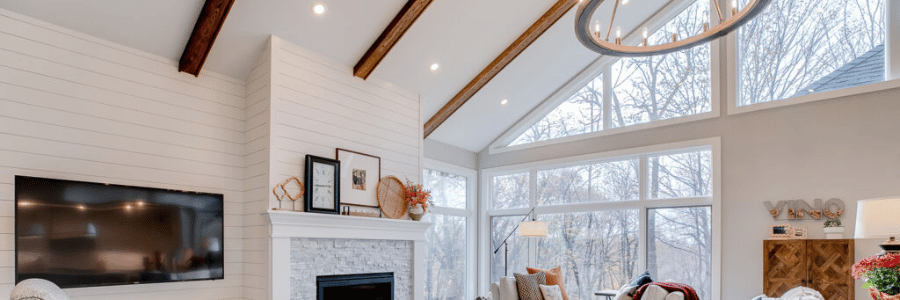
Conclusion
Geometric and asymmetrical windows are a fantastic way to break away from traditional window designs and introduce a sense of individuality and creativity into your home. From bold triangular shapes to soft, curved circular windows, the possibilities are endless when it comes to incorporating these unique designs into your space. Whether you’re aiming for a modern, minimalist aesthetic or a more organic, nature-inspired look, these window shapes offer both beauty and function, transforming ordinary walls into extraordinary focal points. So why settle for the usual when you can think outside the box—literally? Explore the world of geometric windows and let your architectural imagination run wild!

